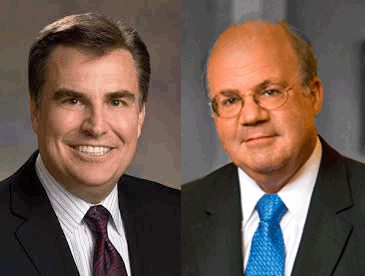It was between sessions at an NFDA convention and busy in the bathroom. An older gentleman approached me and asked brusquely, “Are you Alan Creedy?” Given his demeanour, for a moment, I wasn’t sure whether to say yes or run. I finally said yes. What he said next made me wish he had chosen a different venue.
“I Just want to thank you for making a man of my son.” he said.
You could have heard a pin drop. Now that we had the rapt attention of everyone in that room I was definitely wishing i was somewhere else. I managed to say, “Sir, I don’t believe we have met.” He introduced himself and the facts behind his odd statement fell into place.
His son had been a client of mine and unwittingly over a period of time he had built up the courage to fire his father. I had little to do with it. Ironically, that was the very action that his father had been waiting for. Dad and Mom turned over the keys and headed to Florida. But if I left the story there it would seem far too easy.
My client’s story is all too typical. Second generation, brought up in the family business, Dad and Mom unwilling to loosen the reigns to let him take over, underpaid and overworked, frustrated with the lack of progress and concerned over whether he would even have a future by the time he was able to make the inevitable changes he saw coming.
I remember 30 years ago when my cohorts were wrestling with their mothers, fathers, uncles and aunts over succession issues. “We’ll never do this to our kids,” they said. Well now it’s their turn and I find they’re worse.
Not long ago I mediated with yet another friend and his 37 year old son. About half way through the conversation I turned to dad and said, “George (not his name), how old were you when you took over from your dad?” (I was there, you see, and I knew the answer) He took a sudden interest in his shoes and finally blustered, “Well…well, I was 34…but it was different then.”
Through my funeral home consulting practice I have come to know a lot of these new 30 and 35 and 40 year old “up and comers.” In my opinion, they are really pretty good. Maybe better in a lot of ways than we were. There comes a time to pass the baton.
Why do we so stubbornly resist? I think it is a lot of things. Mostly fear. In some cases we fear a loss of relevancy. We have so much invested in our career we don’t know what our role will be without it. In other cases it is the insecurity of not being in control. And in still others it is simply the stubborn selfishness of age.
Today, I see a lot of parent/owners who really want to do the right thing. But by hanging on too long they are effectively neutering their own kids and crippling the future of their business.
In addition to the make-a-man-out-of-my-son story here are two others I like:
“I decided at 35 there wasn’t room for both of us. I was terrified. I had never done anything else for a living but I wasn’t going to live like this. I walked into his office and said: ‘Dad, there isn’t room for both of us. Either you go or I do.’ He just stared at me and didn’t say a word. I turned around and left and went back to work. I started looking for a job. A week later he walked in and said ‘Your mother and I have talked and your right. It’s yours.'”
“Our dad always told us we could own the business and receive compensation from it IF and only if we actually worked in it. I was the only one who wanted to work in it. So I bought in and when he retired he sold me the rest of it. He took care of my other brothers and sisters in his estate but they weren’t allowed to own or benefit from the business without working in it.”
Well, I bet you thought this story was going to be about something else. Gotcha!!! But if you have children over 30 in the business you need to be thinking succession and, like it or not, you are one day going to have to get out of their way. It’ll happen any way…one way or another. If it were me I would do it while I was still alive so I had something to be proud of.







